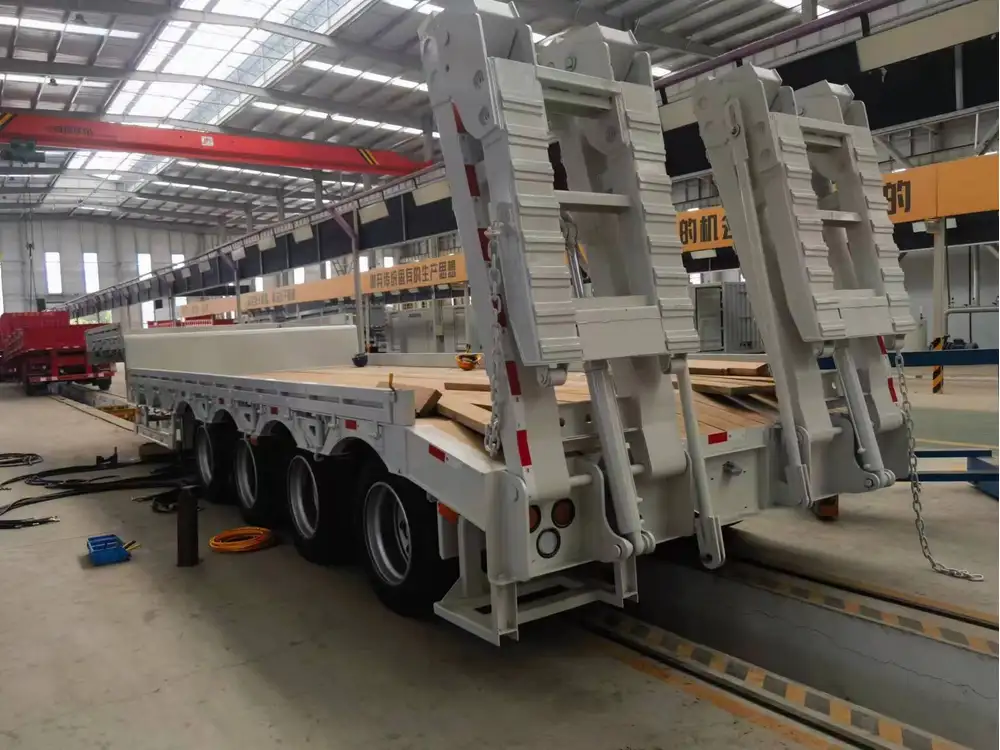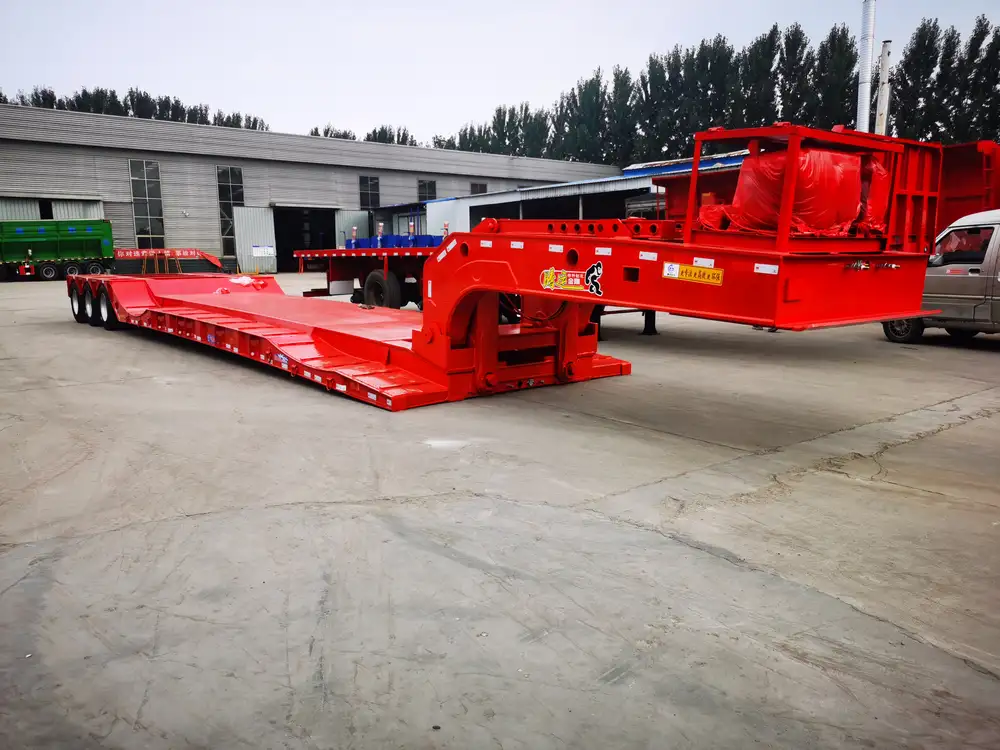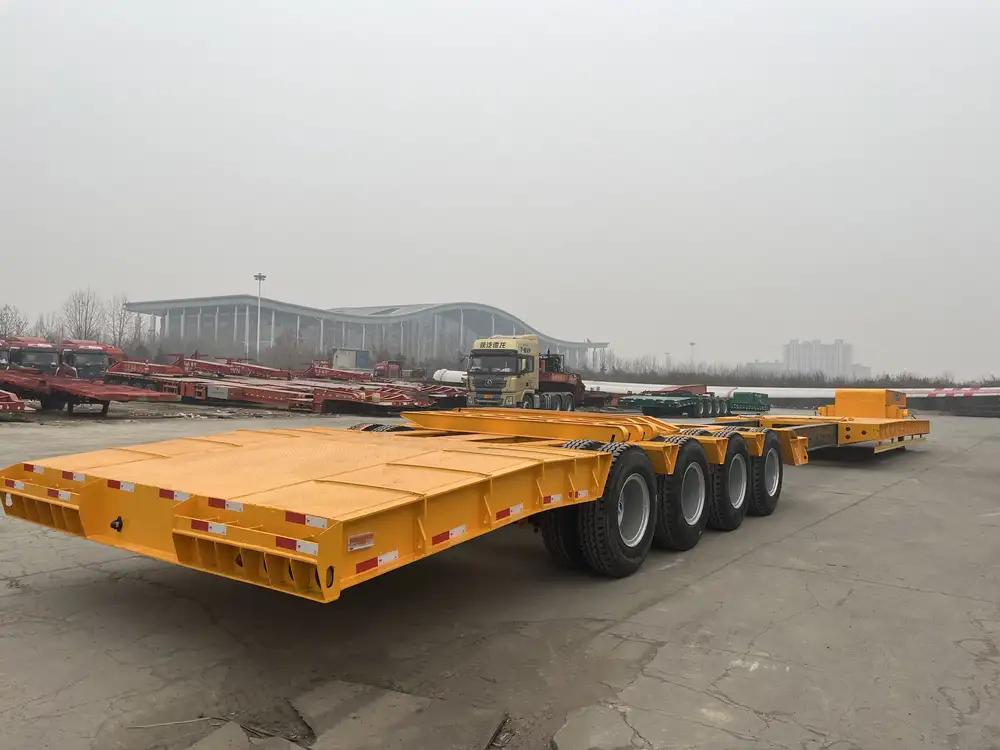In the expansive world of transportation and logistics, the truck tractor semi-trailer combination is paramount. This sophisticated vehicle assembly not only enables the movement of goods across great distances but also serves as a pivotal cog in the machinery of commerce. This article dives deep into the intricacies of truck tractors, semi-trailers, their interrelation, and other critical components influencing their performance and efficiency.
1. The Basics of Truck Tractors and Semi-Trailers
1.1 What is a Truck Tractor?
A truck tractor, commonly referred to as a “tractor,” is a powerful vehicle designed primarily for towing. Equipped with a hitch for coupling with various types of trailers, truck tractors come in multiple configurations based on their intended use, ranging from light-duty to heavy-duty applications.

1.1.1 Features of Truck Tractors
| Feature | Description |
|---|---|
| Engine Power | Typically between 300 to 600 HP, providing the necessary power for heavy loads. |
| Torque | High-torque engines allow for better acceleration and climbing capabilities. |
| Stability | With a longer wheelbase, trucks offer a more stable ride, particularly when loaded. |
| Comfort | Modern tractors are equipped with advanced cabin comforts including heated seats, ergonomic design, and infotainment systems. |
1.2 What is a Semi-Trailer?
Semi-trailers are trailers without a front axle, relying on their connection to the truck tractor for support. They are designed to haul cargo and are crucial to the trucking industry.
1.2.1 Types of Semi-Trailers
| Type | Description |
|---|---|
| Flatbed | Offers versatility for various cargo types, and easy loading/unloading. |
| Dry Van | Enclosed trailer for transporting sensitive cargo. Provides protection from the elements. |
| Refrigerated | Maintains low temperatures for perishable goods. Essential for food transport. |
| Tanker | Designed for transporting liquids, including hazardous materials. |
| Lowboy | Offers a lower deck that allows for transportation of taller loads. |

2. The Synergy of Truck Tractors and Semi-Trailers
Understanding how truck tractors and semi-trailers operate together offers valuable insights into maximizing their potential in a business context. This relationship determines the overall performance, efficiency, and safety of freight transport.
2.1 The Coupling Process
The coupling of a truck tractor and a semi-trailer is a meticulous process that requires precision. The fifth wheel, an important component, allows the tractor to pivot as it tows the trailer.
2.1.1 Steps to Proper Coupling:
- Align the Tractor and Trailer: Gradually maneuver the tractor towards the trailer.
- Engage the Fifth Wheel: Ensure that the hitch mechanism locks securely.
- Check the Connection: Look for any signs of misalignment or improper connection.
- Test the Brakes: Ensure that the trailer brakes are operational.

2.2 Load Distribution and Safety
Proper load distribution is vital for maintaining stability during transport. An unevenly loaded semi-trailer can lead to dangerous situations, including rollovers.
2.2.1 Best Practices for Load Distribution:
- Center Heavy Loads: Heavier items should be placed closer to the axles of the semi-trailer to reduce stress on the rear end.
- Balanced Weight: Distribute weight evenly across all axles.
- Secure the Cargo: Utilize ratchet straps and other equipment to minimize movement during transit.
3. Maintenance Best Practices for Optimal Performance
Maximizing the longevity and performance of truck tractors and semi-trailers requires regular maintenance and attention to detail. This section outlines key considerations in maintaining these vehicles.

3.1 Regular Inspections
Routine inspections can identify potential issues before they escalate into costly repairs.
3.1.1 Key Areas for Inspection:
| Area | Inspection Frequency |
|---|---|
| Tires | Monthly |
| Brakes | Monthly |
| Engine Fluids | Every 500 miles |
| Lights | Every trip |
| Suspension Systems | Quarterly |
3.2 Preventive Maintenance
Implementing a preventive maintenance schedule ensures that all vehicle parts are functioning optimally.

3.2.1 Components of Preventive Maintenance:
- Oil Changes: Replace engine oil every 10,000 miles or as needed based on usage.
- Fluid Levels: Regularly check coolant, transmission, and brake fluid levels.
- Air Filters: Replace air filters according to the manufacturer’s specifications, usually every 30,000 miles.
4. Innovations in Truck Tractor and Semi-Trailer Technology
The trucking industry is constantly evolving, with innovations that enhance efficiency, safety, and sustainability.
4.1 Advanced Driver-Assistance Systems (ADAS)
ADAS technologies are integrated into modern truck tractors, improving safety measures on the road.

4.1.1 Features of ADAS:
- Lane Departure Warning: Alerts drivers when they veer off course.
- Adaptive Cruise Control: Automatically adjusts speed based on the distance from the vehicle in front.
- Automatic Emergency Braking: Engaging brakes in critical situations, reducing the risk of collisions.
4.2 Eco-Friendly Technologies
With increasing awareness of environmental conservation, manufacturers are investing in eco-friendly technologies.
4.2.1 Noteworthy Innovations:
| Technology | Description |
|---|---|
| Hybrid Engines | Combine diesel with electric propulsion to reduce emissions. |
| Aerodynamic Designs | Enhancements in the design of both tractors and trailers to minimize air resistance. |
| Telematics | Implementing smart data analytics that track vehicle performance and carbon footprint. |

5. Economic Impact of Truck Tractors and Semi-Trailers
The economic implications of truck tractor semi-trailer combinations are substantial, influencing local and global economies alike.
5.1 Cost of Ownership
Owning and operating truck tractors and semi-trailers comes with significant financial commitments.
5.1.1 Financial Considerations:
| Expense | Explanation |
|---|---|
| Purchase Price | Initial investment for acquiring vehicles. |
| Fuel Costs | A major recurring expense, influenced by fuel prices. |
| Maintenance Costs | Regular maintenance and unexpected repairs. |
| Insurance | Liability and property damage coverage. |

5.2 Contribution to Employment
The trucking industry supports millions of jobs, from drivers to logistics coordinators, enhancing the employment landscape in many regions.
6. Conclusion
The interplay between truck tractors and semi-trailers is a testament to the engineering marvels that drive our economies. By understanding their components, maintenance, innovations, and economic impact, businesses can optimize their logistics strategies, ensuring they stay competitive in an ever-advancing sector.
As we look toward the future, it’s evident that the truck tractor semi-trailer relationship will continue to evolve, driven by technological advancements and increasing global demands. This dynamic landscape not only presents challenges but also opportunities for those ready to embrace change and innovation. Through informed decision-making and strategic investment, stakeholders in the trucking industry can navigate these shifts and propel their businesses toward sustained growth and success.



